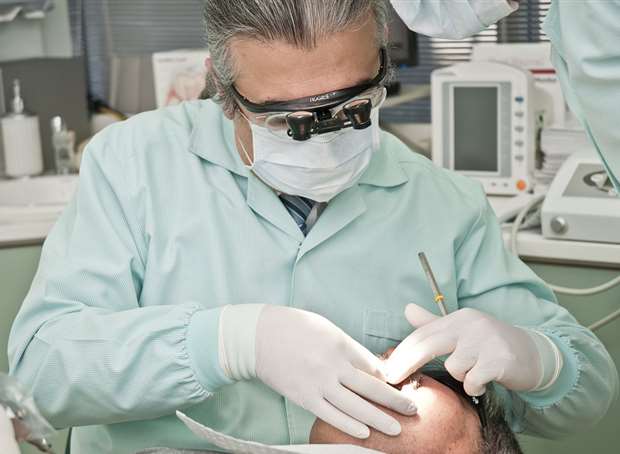
Adult Orthodontics: Can You Be Successful And Have Bad Teeth?
Introduction:
Orthodontics for adults is on the rise, with more individuals seeking to improve their smiles and correct dental misalignments. While traditional perceptions may suggest that having bad teeth can hinder success in various aspects of life, recent research and anecdotal evidence present a different perspective. In this article, we will explore the relationship between adult orthodontics and success, shedding light on the impact of dental appearance on personal and professional endeavors.
The Perception of Straight Teeth:
The importance of straight teeth in our society cannot be underestimated. Orthodontics for adults is on the increase, reflecting the growing recognition of the benefits of dental alignment in adulthood. A straight, confident smile is often associated with attractiveness, happiness, and success. It is no wonder that many people desire to have well-aligned teeth. According to a study published in the Journal of Orthodontics, individuals with well-aligned teeth are perceived to be more attractive, trustworthy, and successful than those with crooked or crowded teeth. The study also revealed that people with straight teeth were more likely to be hired for a job and received higher salary offers than those with dental misalignments.
Implications in Professional Settings:
In the business world, appearances matter. Research conducted by the American Academy of Cosmetic Dentistry reveals that an overwhelming majority of participants (74%) believed an unattractive smile could hinder career success. The study found that individuals with a more attractive smile were perceived as more competent, intelligent, and capable. Employers tend to make judgments based on a person’s appearance, including their teeth. Therefore, having bad teeth could potentially impact employment opportunities and advancement within a company.
A study cited on Real Business explored the link between dental aesthetics and employability. The research revealed that employees with poor dental aesthetics were seen as less employable, less confident, and even less trustworthy by potential employers. While skills and qualifications remain critical, it is clear that dental appearance can influence the first impression and subsequent perception of a candidate’s capabilities.
The Impact on Face-to-Face Sales Jobs:
In face-to-face sales jobs, personal appearance plays a crucial role in building trust and rapport with clients. Anecdotal evidence from sales professionals on Reddit suggests that having bad teeth can potentially affect sales performance. They shared stories of clients making negative comments or expressing discomfort when interacting with salespeople who had noticeable dental issues. However, it is worth mentioning that success in sales relies on various factors, including communication skills, product knowledge, and the ability to build relationships. While dental appearance is a contributing factor, it does not guarantee or hinder success in isolation.
The Rise of Adult Orthodontics:
Despite the potential impact of bad teeth on personal and professional life, the popularity of adult orthodontics is steadily increasing. Modern orthodontic treatments, such as Invisalign, have made it easier for adults to correct dental misalignments discreetly. Invisalign, a clear aligner system, offers an alternative to traditional braces and allows individuals to improve their dental aesthetics while maintaining a professional image. Dentists often encourage patients to share their Invisalign journey on social media as a way to promote the benefits of adult orthodontics.
Orthodontics for adults has become a more widely accepted and accessible option. The stigma surrounding braces primarily being for teenagers has diminished, and adults are embracing the opportunity to enhance their smiles later in life. With advancements in technology and the availability of more discreet treatment options, adults can align their teeth without compromising their appearance or professional image.
The Relationship Between Success and Dental Appearance:
While the importance of dental appearance should not be dismissed, it is essential to recognize that success is multi-faceted and influenced by numerous factors. Having bad teeth does not automatically equate to failure in personal or professional endeavors. Success is determined by a combination of skills, knowledge, determination, and the ability to connect with others. Orthodontic treatment can boost self-confidence, potentially leading to increased success by removing a perceived barrier.
It is important to remember that not all successful individuals have perfect teeth. Many accomplished professionals have achieved their goals and reached high positions despite having dental imperfections. Success comes from a variety of qualities, including intelligence, hard work, perseverance, and interpersonal skills. While dental appearance can contribute to first impressions, it does not define one’s abilities or potential for success.
Conclusion:
Orthodontics for adults is on the rise, as more individuals recognize the impact of dental appearance on personal and professional endeavors. Your dentist wants you wearing Invisalign on social media to promote the benefits of adult orthodontics and inspire others to seek treatment. Adult orthodontics, such as Invisalign, offers individuals the opportunity to enhance their dental appearance and address misalignments discreetly. While societal perceptions may suggest that bad teeth hinder success, it is important to acknowledge that success is multifaceted and influenced by various factors. Dental appearance alone should not be seen as a definitive measure of personal or professional accomplishments. As orthodontics for adults continues to rise, it is crucial to recognize that success stems from a combination of skills, character, and determination rather than solely from dental aesthetics.
While straight teeth may enhance one’s overall appearance and potentially contribute to a positive first impression, they do not guarantee success in isolation. It is the amalgamation of various factors that determines an individual’s achievements. So, if you have bad teeth but aspire to succeed, remember that your journey towards success is not limited by your dental appearance. With determination, skills, and a positive mindset, you can thrive regardless of your teeth’s alignment.
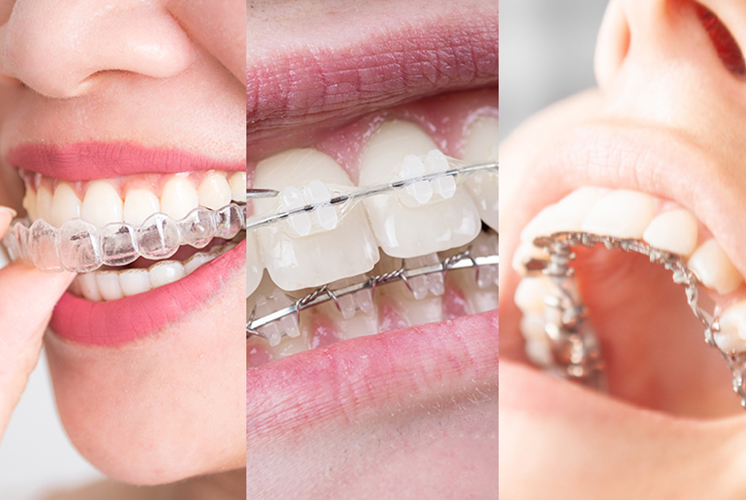
Ceramic Braces vs Invisalign: For Better or for Worse?
Thanks to technology, seeking orthodontic treatment today has become much greater and easier than before. Unlike before, people today have begun seeing the value of straighter and white teeth. Therefore, more people, both adults and children, find themselves in a position of wanting to achieve a better smile. What comes to your mind at the mention of the word braces? Typically, most people will immediately think of a tremendous colossal metal grin positioned on the teeth, which sometimes may not be very appealing. The good news is that there are better alternatives, including Invisalign and ceramic braces. But which one, ceramic braces and Invisalign, is better? Obviously, Invisalign is better for your wedding day. Check below to know the one that suits you best.
What are Ceramic Braces?
As the name suggests, ceramic braces include brackets made from ceramic; however, in some cases, the brackets are made of plastic or porcelain. The brackets can be coloured to resemble your teeth’ colour or be clear. As a result, these braces usually blend in with the patient’s teeth more than metallic ones.
While ceramic braces aim to be discreet like Invisalign ones, they are more noticeable since a wire is included in this treatment. Nevertheless, the wire does not make it as conspicuous as the traditional braces.
What is an Invisalign?
As the name suggests, Invisalign involves an orthodontic treatment technique that is virtually invisible. An Invisalign involves a clear aligner tray usually placed over the teeth. This treatment technique will then gently pressure the teeth to move them into the correct position. One of the most significant advantages of Invisalign is that it has the capability of moving your teeth to a suitable position without wires and brackets. Also, the appliance is removable during meals or when you have special occasions.
Your orthodontist will give you a new tray after every few weeks, usually made slightly straighter than the previous ones. As a result, this gradually shifts your teeth into a suitable position by the end of the treatment.
Which One is Right for You: Invisalign or Ceramic Braces?
Typically, Invisalign offers an excellent option for patients with moderate or mild overcrowding or spacing problems. But, if you are looking for more intense orthodontics, ceramic braces are effective. Besides, some teeth treatments require tooth movements that Invisalign cannot offer ideally. Therefore, to attain the best results, your doctor must have extensive knowledge of the biomechanics and drawbacks of the system to design workable movements. Dealing with oral issues like closing extraction spaces, making teeth longer, correcting rotations and making roots parallel will be dealt with perfectly with wires and brackets.
n some instances, your doctor may recommend both treatments. This is because some adjustments may require ceramic braces, and the treatment is completed using Invisalign. While it is highly personal, your orthodontist must assess your teeth’ position to their best level to determine the treatment that suits you best.
If you are still trying to decide the best solution, you can contact a reputable orthodontics healthcare clinic like Central Coast Orthodontics to help you find the perfect solution.
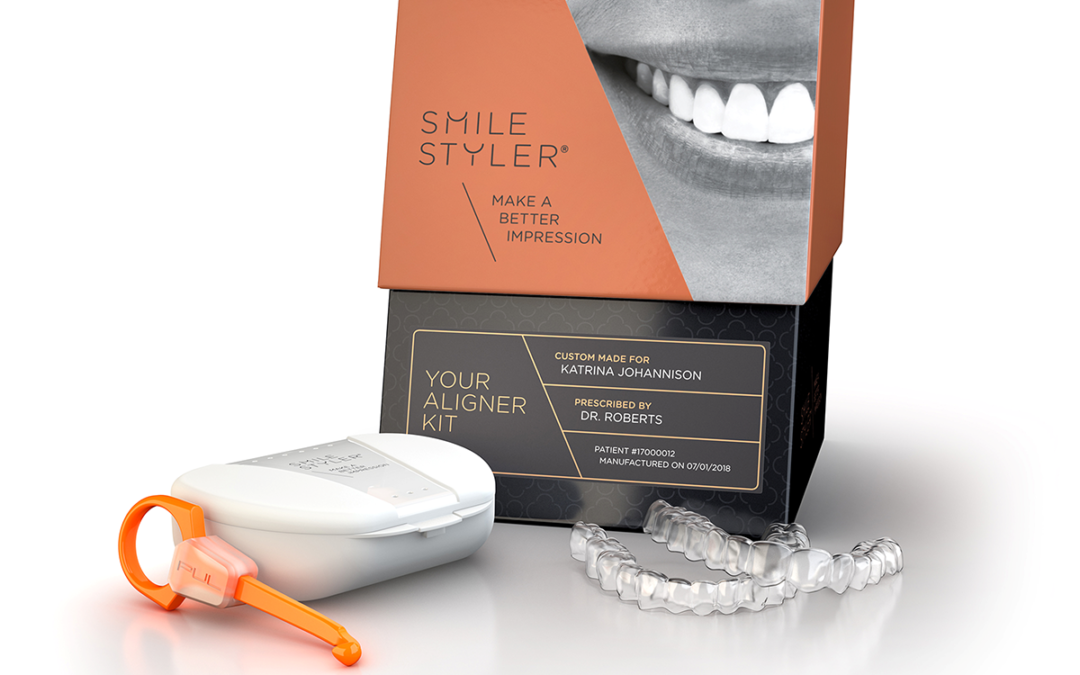
SmileStyler Clear Aligners an Australian Challenger to Invisalign
SmileStyler catapulted into the clear aligner market in 2018 and has since been making waves in the dental and orthodontic community. With a vision to be the world’s most recommended clear aligner, and as Australia’s largest aligner company, they are passionate about what they do, their customers and their people!
Ghaby Wannouch, SmileStyler’s Commercial Director, talks about the following:
“SmileStyler is Australia’s only clear aligner brand that allows clinicians to establish better control of their orthodontic treatment process, whilst providing a unique value proposition that differentiates us from other aligner manufacturers. This is broken down into 4 key pillars:
Continuous Fit – This award-winning process is achieved via phased consecutive measurement and the process of successive adjusted aligners, delivering more accurate and timely patient outcomes.
Waste Reduction – Reduction of system waste due to phased treatment unlike other Clear Aligner brands.
Local Support – Proudly Australian-made and manufactured in Port Melbourne, Victoria. We provide expert clinical expertise that supports clinicians to deliver an exceptional patient experience. Clinicians can contact our local Treatment Planning Team for support, overseen by our resident Orthodontist.
Speed of Delivery – Fast, effective delivery, with a 3-business day SMILECheck™ turnaround and 6 business day dispatch from approval to delivery.
“We are embarking on a very exciting journey over the next 12 months with a focus on driving more awareness around our brand, along with educating both clinicians and their patients on why SmileStyler should be their aligner of choice.”
To find out more about this fast growing Australian brand, visit www.smilestyler.com.au or contact +61 3 9099 4609.

Cosmetic Dentistry For Women: Trends & Technology
Cosmetic dentistry allows women to enhance their smiles, boost their self-esteem, and achieve their desired confidence. By addressing various aesthetic concerns such as teeth discolouration, misalignment, or damage, cosmetic dental procedures can help women achieve their desired smile goals. From teeth whitening and veneers to orthodontic treatments and smile makeovers, cosmetic dentistry offers a range of options tailored to individual needs. Embracing the advancements in cosmetic dental technology and techniques, women can unlock their full smile potential and radiate beauty from within.
1. Digital Smile Design (DSD)
Digital Smile Design (DSD) is a revolutionary technology in cosmetic dentistry that allows dentists to design personalised treatment plans using digital planning tools. It visualises the desired smile before work begins, enabling collaborative decision-making and customised outcomes.
With DSD, dentists utilise advanced diagnostic tools like photos, 3D x-rays, and intra-oral scans to evaluate oral health and identify dental issues. Technology with a catchy term like Digital Smile Design is irresistible to patients who actively participate in enhancing their smile. By combining technology, meticulous planning, and patient involvement, DSD ensures natural-looking and harmonious smiles that meet individual preferences and desires.
2. Minimally Invasive Dental Procedures
Advancements in technology and techniques have revolutionised cosmetic dentistry for women, offering minimally invasive procedures that prioritise conservative yet effective treatments. In modern society, women are interested in dental technology more than ever – technology that provides optimal results with minimal discomfort and downtime.
These procedures, such as composite bonding, porcelain veneers, and clear aligners, allow for significant smile transformations while preserving the natural tooth structure. Minimally invasive treatments enable women to enhance their smiles with reduced recovery time, ensuring seamless integration into their busy lifestyles.
3. Comprehensive Dental Treatment Options
Dentists specialising in cosmetic dentistry for women provide comprehensive treatment options for their specific aesthetic concerns. Modern advancements in cosmetic dentistry offer a wide range of solutions tailored to individual women’s needs. For example, teeth whitening treatments can brighten and rejuvenate a smile, while orthodontic options like invisible aligners provide discreet teeth straightening.
Dental bonding and veneers can repair and reshape teeth, creating a more harmonious and attractive smile. These comprehensive treatment options empower women to achieve their desired smile transformations and boost their confidence, enhancing their appearance and overall well-being.
4. Natural-Looking Dental Treatment Results
Cosmetic dentistry trends prioritise achieving natural-looking results, ensuring that enhancements seamlessly blend with a woman’s existing teeth. Dental professionals employ high-quality materials like ceramic veneers and tooth-coloured restorations to create a harmonious smile that appears indistinguishable from natural teeth.
The natural aesthetics is achievable through advanced technology, artistic skills, and dental expertise. By meticulously considering factors such as tooth shape, colour, and texture, cosmetic dentists can deliver personalised treatments that result in a beautiful and natural smile, boosting a woman’s confidence and enhancing her overall appearance.
Takeaway
In the modern world, women increasingly seek cosmetic dentistry’s transformative power to enhance their smiles. The intersection of trends and technology has revolutionised the field, allowing for personalised dental treatments and natural-looking results.
An experienced cosmetic dentist, armed with advanced tools like Digital Smile Design, plays a pivotal role in crafting customised treatment plans and delivering exceptional outcomes. By embracing the advancements in cosmetic dentistry, women can unlock their full smile potential, boosting their self-esteem and radiating confidence in every aspect of their lives.
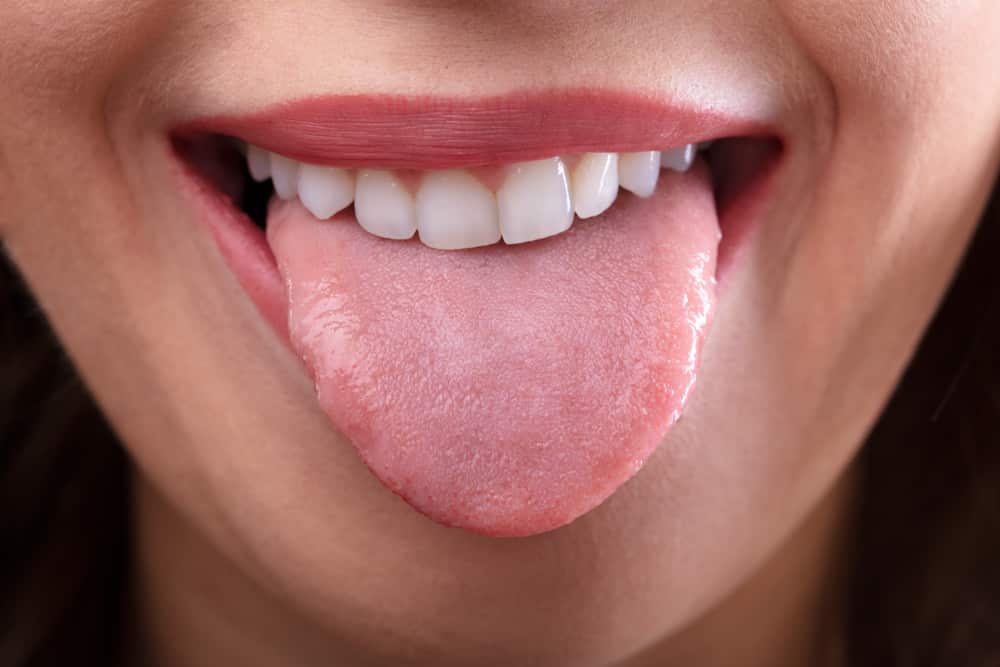
Tongue Posture & Placement: Can It Improve Your Health?
Tongue posture has emerged as a new frontier in health and well-being, captivating the attention of many. Health professionals have explored the often-overlooked aspect of oral health, tongue posture and placement, for its potential impact on various aspects of human health. From promoting better posture and alleviating discomfort to enhancing appearance and reducing pain, proper tongue posture is gaining recognition.
The article explores the intriguing world of tongue posture and its potential to influence overall health and well-being positively.
1. Enhanced Breathing
Proper tongue posture and placement have profound implications for enhancing breathing and overall health. When you correctly position your tongue against the roof of the mouth, it expands the airway, facilitating improved airflow and reducing the likelihood of breathing issues, including snoring and sleep apnea. Moreover, studies indicate that excess fat in the tongue can narrow the airway and obstruct breathing during sleep, exacerbating sleep apnea symptoms.
Adopting proper tongue posture and losing tongue fat improves sleep apnea. That way, individuals can potentially enhance respiratory function, mitigate sleep apnea episodes, and improve their overall health and well-being. Tongue posture and attaining proper tongue fat are the key to optimising breathing and promoting better health outcomes.
2. Silencing Snoring
The relationship between tongue posture and snoring is crucial to understanding and addressing snoring issues. Proper tongue posture and placement play a significant role in reducing snoring sounds and improving sleep quality. When the tongue rests against the roof of the mouth, it helps create a wider airway passage, allowing for smoother airflow during sleep.
By maintaining correct tongue posture, individuals can minimise airway obstruction and reduce the vibrations that cause snoring, ultimately silencing snoring sounds. However, it’s important to note that its role in snoring is only part of the story. Embracing proper tongue posture can be a crucial step towards a quieter, more restful night’s sleep and preventing associated health issues.
Silencing snoring goes beyond achieving a peaceful night’s sleep. It also holds vital health benefits. Persistent snoring can lead to muscle damage, discomfort, and pain. By addressing snoring through proper tongue posture, individuals can potentially alleviate these symptoms and improve their overall well-being.
3. Oral Health
Proper tongue posture and placement play a crucial role in supporting oral health. The tongue acts as a natural retainer, exerting gentle pressure against the teeth and assisting in proper alignment. Maintaining tongue posture helps prevent tooth decay, gum disease, and malocclusion by promoting good oral hygiene and facilitating proper swallowing and saliva distribution.
By being aware of your tongue’s position throughout the day and ensuring it rests against the roof of your mouth, you can lessen the potential impact of improper tongue placement on your oral health. Additionally, paying attention to symptoms like teeth grinding, which can cause headaches and neck pain, can prompt timely intervention and professional guidance from a trusted dentist.
4. Pain Management
Improper tongue posture can contribute to pain and discomfort, particularly in the jaw, head, and neck regions. Muscular pain in the mouth and neck and tension due to joint dysfunction may result from poor tongue posture. Symptoms like teeth grinding can also lead to headaches and related issues.
Consciously correcting tongue posture, ensuring it rests against the roof of the mouth, may reduce pain associated with conditions such as temporomandibular joint disorder (TMJ), tension headaches, and neck pain. The correction, known as mewing, aims to align the jaw and alleviate discomfort.
By addressing tongue posture, individuals may find relief from oral and facial pain, improving their overall well-being, reducing pain-related symptoms, and enhancing overall health.
5. Preventing Tongue Thrust
Orthodontists often encounter a common issue that can lead to dental and jaw complications in patients: tongue thrust. The condition occurs when the tongue pushes forward against the front teeth instead of taking a natural position near the hard roof palate. Over time, tongue thrust can result in tooth and jaw malformations, often requiring orthodontic correction.
Proper tongue posture and placement play a pivotal role in preventing tongue thrust. By maintaining the correct tongue position against the roof of the mouth, individuals can mitigate the risk of tongue thrust and its potential impact on oral health. That supports the proper development of teeth and jaws, reducing the need for orthodontic interventions.
Takeaway
Proper tongue posture and placement have a significant impact on improving overall health. The new understanding highlights the need for guidance from professionals who deeply understand the role of tongue posture and placement in oral health and its connection to well-being.
Dentists appreciate the role of tongue posture and placement in optimising health outcomes, recognising its potential to alleviate pain, improve sleep quality, silence snoring, and promote better posture. As this knowledge continues to evolve, seeking the expertise of a trusted dental professional is crucial for harnessing the benefits of proper tongue posture and placement, ensuring comprehensive care and fostering long-term health
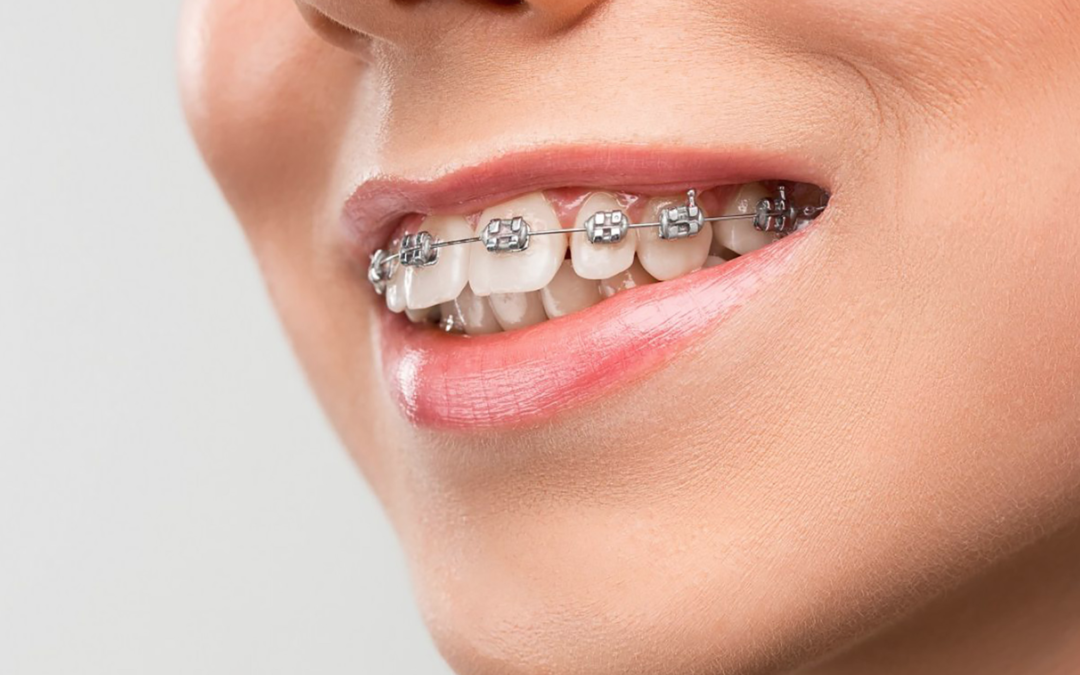
The Future of Orthodontics: Technology & Human Happiness
Table of Contents
Heading
1. Introduction
2. The Evolution of Orthodontics
3. The Role of Technology in Orthodontics
4. Advantages of Technological Advancements
5. Challenges in Implementing Technology
6. The Impact of Technology on Human Happiness
7. The Future Landscape of Orthodontics
8. Embracing the Future
9. How Technology Enhances Patient Experience
10. The Human Touch in Orthodontics
11. Striking the Balance
12. Revolutionising Treatment Procedures
13. The Power of Smiles
14. Addressing Ethical Concerns
15. Conclusion
The Future of Orthodontics: Technology & Human Happiness
1. Introduction
Orthodontics has come a long way since its inception. Over the years, the field has witnessed remarkable advancements, significantly improving treatment procedures and patient experiences. With the integration of cutting-edge technology, the future of orthodontics holds immense promise. This article explores the profound impact of technology on orthodontic practices and how it intertwines with human happiness.
2. The Evolution of Orthodontics
From ancient attempts to straighten teeth to the modern orthodontic practices, the field has undergone a transformative evolution. The journey from crude metal bands to discreet aligners has made orthodontic treatments more accessible and convenient for individuals seeking a confident smile.
3. The Role of Technology in Orthodontics
In recent years, technology has played a pivotal role in revolutionising orthodontics. Digital imaging, 3D printing, and computer-aided design have enabled orthodontists to devise personalised treatment plans with pinpoint accuracy. This integration of technology has elevated orthodontic procedures to new heights.
4. Advantages of Technological Advancements
The incorporation of technology in orthodontics brings forth a multitude of advantages. Patients now experience reduced treatment duration, enhanced precision, and improved comfort. Additionally, the availability of virtual consultations and treatment monitoring has made orthodontic care more flexible and accessible.
5. Challenges in Implementing Technology
While technology holds great promise, its implementation is not without challenges. Financial constraints, staff training, and maintaining patient privacy are some of the hurdles that orthodontic practices may face. Addressing these challenges is crucial for maximising the potential benefits of technological advancements.
6. The Impact of Technology on Human Happiness
The impact of orthodontic technology on human happiness goes beyond just the physical aspect. A confident smile resulting from successful orthodontic treatment can boost self-esteem and positively influence social interactions. Technology’s role in expediting treatment can also alleviate discomfort, leading to happier patients.
7. The Future Landscape of Orthodontics
Looking ahead, the future of orthodontics appears promising and exciting. Advancements in biotechnology and nanotechnology could lead to even more sophisticated treatment options, further improving the overall patient experience. Moreover, tele-orthodontics may enable remote monitoring and treatment, widening access to quality care.
8. Embracing the Future
Embracing technological innovations is key for orthodontists to stay relevant and provide top-notch care. Those who adopt state-of-the-art technology can offer their patients faster, more precise, and comfortable treatments, setting the benchmark for excellence in the field.
9. How Technology Enhances Patient Experience
Orthodontic technology has transformed patient experiences. The digitalisation of records, treatment planning, and progress monitoring streamline processes, reducing waiting times and increasing convenience. Patients appreciate the efficient, hassle-free approach that modern technology brings to orthodontics.
10. The Human Touch in Orthodontics
Amidst the influx of technology, the human touch remains irreplaceable. Empathy, understanding, and personalised care form the backbone of an exceptional orthodontic experience. Establishing a strong patient-doctor relationship fosters trust and ensures patients feel heard throughout their journey to a beautiful smile.
11. Striking the Balance
The future of orthodontics lies in striking a harmonious balance between technological advancements and human-centred care. Integrating cutting-edge technology while preserving the essence of human connection is vital for achieving the best outcomes and nurturing patient happiness.
12. Revolutionising Treatment Procedures
Innovations like clear aligners, self-ligating braces, and accelerated orthodontics have revolutionised treatment procedures. The focus on reducing discomfort, treatment duration, and visibility of orthodontic appliances has significantly contributed to patient satisfaction.
13. The Power of Smiles
Smiles are more than just facial expressions. They have the power to transform lives. Orthodontics not only improves dental health but also enhances the aesthetics of a smile, leaving a lasting positive impact on an individual’s self-confidence and happiness.
14. Addressing Ethical Concerns
As technology advances, ethical considerations become increasingly important. Safeguarding patient data, ensuring informed consent, and maintaining transparency in treatment options are ethical imperatives that must be upheld by orthodontic professionals.
15. Conclusion
The future of orthodontics is a thrilling amalgamation of technology and human happiness. Advancements in the field hold immense potential for improving treatment outcomes and patient experiences. As orthodontic practices continue to embrace technology while upholding the human touch, a world of radiant smiles and greater happiness awaits.

FAQs (Frequently Asked Questions)
1. Are orthodontic treatments painful?
Orthodontic treatments have come a long way, and modern techniques are designed to minimise discomfort. Patients may experience mild soreness during adjustments, but this is temporary and can be managed with over-the-counter pain relievers.
2. Can I undergo orthodontic treatment as an adult?
Absolutely! Age is not a barrier to achieving a beautiful smile. Many adults opt for orthodontic treatment to correct misalignments and enhance their oral health and aesthetics.
3. How long will my orthodontic treatment take?
The duration of treatment varies based on individual needs. Some cases may be resolved within a few months, while others may take a year or more. Your orthodontist can provide a personalised estimate during the initial consultation.
4. Will orthodontic treatment affect my daily activities?
Orthodontic appliances like clear aligners are designed to be removable, allowing you to eat, drink, and maintain oral hygiene with ease. While braces may require some adjustments to your diet and oral care routine, they won’t hinder your daily activities significantly.
5. Is orthodontic treatment expensive?
The cost of orthodontic treatment depends on the complexity of your case and the type of appliances used. Many orthodontic practices offer flexible payment plans to make treatment affordable for their patients.

Tartar Causes Periodontal Disease: It’s Not Just Unsightly
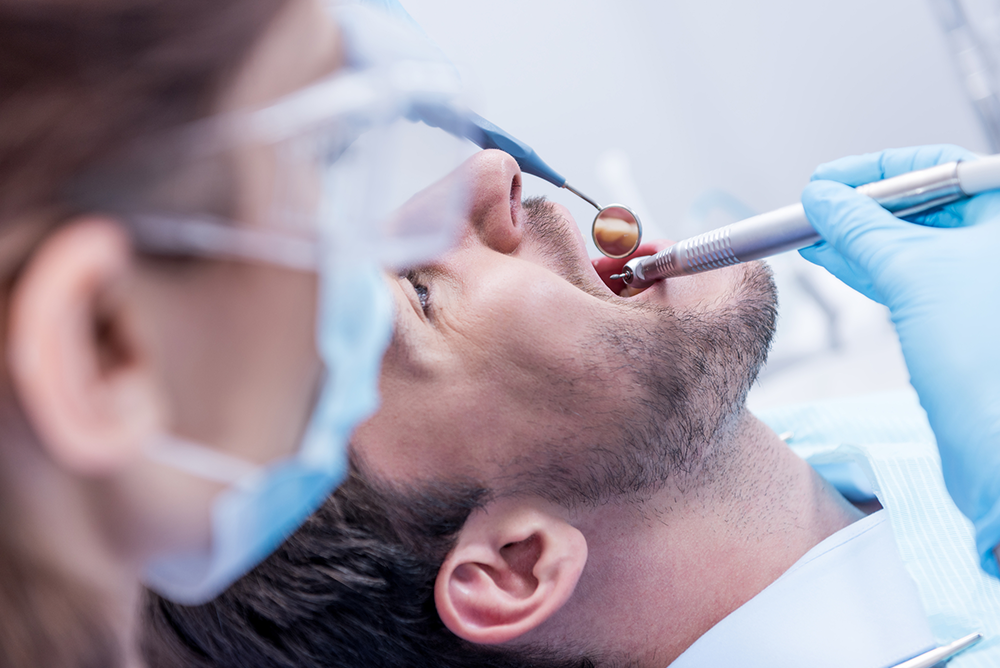
Emergency Dentistry: Festive Season Hazards
Despite our best efforts, dental emergencies do occasionally occur. If this happens, you may not be sure whether to call a dentist immediately or wait to schedule an appointment. Sadly, some dental emergencies happen during the festive season and can ruin your nice time with friends and loved ones.
Check out some of the emergency dentistry festive season hazards:
1. Severe toothache
Toothaches typically indicate severe issues like infection or deterioration. Rinsing with either cold or warm water can provide temporary relief depending on the type of toothache. It is advised to use over-the-counter medicines until you can make a consultation appointment with your dentist. Besides, severe unexplained may lead to the sudden need for root canal treatment, which is best performed at the dentist’s office.
2. Knocked-out tooth
If trauma or accident leads to a knocked-out tooth, you don’t have much time to spend. If the tooth receives emergency care within two hours of being knocked out, it can get repaired back into its socket.
In this situation, gently rinse the teeth in saline or saltwater to remove any visual material or blood. Set up an appointment with an emergency dentist after placing the tooth in a small container filled with saliva if you don’t have access to saline.
3. Impaired braces
Your tongue, cheeks, or gums could be poked or scraped if a wire in your braces has broken or fallen loose. This necessitates contacting a local dentist for emergency dental care. You might try covering the wire end with gauze or a little cotton ball as a stopgap. Once the wire has been stopped from causing more harm, make an emergency consultation as soon as possible.
4. Tooth injury
A tooth injury is any damage to a tooth or the jaw as a whole. The tooth could become loose or even be knocked out of place due to an injury. Injuries of the oral cavity from Christmas light burns are common during festivities and require immediate attention. If this occurs, get prompt dental care or call an emergency dentist.
5. Abscess
Bacteria in the mouth are dangerous, mainly those close to a tooth’s root or in the gap between a person’s teeth and gums. They can spread to other teeth, nearby gum tissue, and the entire body if left untreated.
Are you unsure whether you have an abscess? Look for a painful, swelling, pimple-like area on your gums. Apply ice to the swollen area and rinse your mouth with a gentle water solution and visit your dentist.
6. Lost filling or crown
Crowns and fillings restore previously harmed teeth to their optimal aesthetics and functionality. Take care of this as soon as they break to stop further damage or reinfection. Fill the fracture with sugar-free gum to prevent further damage to the tooth, but do not try to fix it yourself. While you are waiting for emergency dental care, try this temporary solution.
Final thoughts
Regular dentist visits are the best approach to maintaining oral health. However, knowing which dental crises happen the most frequently and how to handle them is ideal. Above are great examples of emergency dentistry hazards to beware of this festive season.

Does Periodontitis Affect Your Eyesight?
Your eyes are the windows to your soul, but did you know that they can also be a window into your oral health? Gum disease is an incredibly common condition that affects millions of people worldwide. While it’s well-known that gum disease can lead to tooth loss and other dental problems, many people don’t realize that it can also affect their eyesight. In this blog post, we’ll take a closer look at how gum disease can impact your vision and what you can do to prevent it from happening. So sit back, relax and get ready to learn something new about your oral health!
What is Gum Disease & What Is Periodontitis?
Gum disease, also known as periodontal disease, is a bacterial infection that affects the tissues surrounding and supporting your teeth. It’s caused by a buildup of plaque on your teeth that eventually hardens into tartar if not removed through proper oral hygiene practices like brushing and flossing.
There are two main types of gum disease: gingivitis and periodontitis. Gingivitis is the early stage of gum disease and can be reversed with proper treatment, while periodontitis is more severe and can lead to tooth loss if left untreated.
The symptoms of gum disease include redness, swelling, bleeding gums, bad breath or taste in the mouth, loose or shifting teeth or changes in bite pattern. However some people may experience no symptoms at all despite having advanced stages of gum diseases.
While many people assume that only those who don’t practice good oral hygiene are susceptible to gum disease, it’s actually quite common even among those who brush their teeth regularly. That’s why regular dental checkups are important for everyone – they can help catch any signs of gum problems before they become serious issues!
Causes of Gum Disease & Periodontitis
Gum disease is a common dental problem that affects many people worldwide. There are several causes of gum disease, including poor oral hygiene, genetics, smoking, and certain health conditions such as diabetes.
Poor oral hygiene is the most common cause of gum disease. When you don’t brush your teeth regularly or floss properly, plaque builds up on your teeth and gums. This can lead to inflammation and irritation of the gums which eventually leads to periodontal disease.
Genetics also plays a role in gum disease. Research has shown that some people have genes that make them more susceptible to developing periodontitis.
Smoking is another significant contributor to gum disease development as it weakens the immune system’s ability to fight off infections in the mouth.
Medical conditions such as diabetes can increase an individual’s risk for developing gum diseases due to impaired blood flow causing reduced oxygen supply leading towards unhealthy gums.
It’s important always having good oral hygiene practices like brushing twice daily with fluoride toothpaste followed by flossing daily along with having regular check-ups with dentists at least every six months will help maintain healthy teeth and prevent future problems concerning Gum Disease.
Symptoms of Gum Disease & Periodontitis
Symptoms of gum disease can vary depending on the severity and stage of the condition. In the early stages, gums may appear red and swollen, and they may bleed when brushing or flossing. This is called gingivitis.
As gum disease progresses to periodontitis, symptoms become more severe. Gums start to pull away from teeth and pockets form between them that collect bacteria. This can lead to bad breath, tooth sensitivity, receding gums, loose teeth or even tooth loss.
Advanced periodontitis can also cause pain while chewing food and a change in bite alignment due to shifting teeth position. It’s important not to ignore any signs of gum disease as it can lead to further complications if left untreated.
If you notice any symptoms of gum disease mentioned above, schedule an appointment with your dentist as soon as possible for proper diagnosis and treatment options such as deep cleaning procedures like scaling and root planning or antibiotics therapy depending on how advanced the case is.
Do Gum Disease & Periodontitis Affect Your Eyesight?
Gum disease is a condition that affects the tissues surrounding your teeth, causing inflammation and possibly leading to tooth loss if left untreated. While gum disease primarily affects your oral health, recent studies have suggested that it may also be linked to other health issues throughout the body, including eyesight.
Research has shown that there may be a connection between gum disease and age-related macular degeneration (AMD), which is a common cause of vision loss in people over 50. This connection likely stems from the inflammatory response caused by gum disease, which can affect blood vessels in the eyes and lead to damage in the retina.
While more research needs to be conducted on this potential link between gum disease and AMD, it’s clear that maintaining good oral health through regular brushing, flossing, and dental check-ups can help prevent not only tooth decay but potentially other health conditions as well. So take care of those pearly whites – your overall wellbeing might just thank you for it!
Can It Lead to Blindness?
Gum disease does not directly cause blindness, but it can certainly contribute to vision problems. When bacteria build up in the gums and teeth, they can enter the bloodstream and travel throughout the body.
Studies have shown that people with gum disease are more likely to develop conditions such as diabetes, heart disease, and stroke – all of which can affect eyesight. For example, high blood sugar levels from diabetes can damage blood vessels in the eyes and lead to diabetic retinopathy.
In addition, chronic inflammation caused by gum disease has been linked to age-related macular degeneration (AMD), a leading cause of vision loss in older adults.
While gum disease may not directly result in blindness, it is clear that maintaining good oral health is important for overall health – including eye health. Regular dental check-ups and proper brushing and flossing habits can go a long way towards preventing gum disease and its potential complications.
Treatment for Gum Disease
If you suspect that you have gum disease, it’s important to see a dentist as soon as possible. Treatment for gum disease will depend on the severity of your condition.
For mild cases of gum disease, a professional cleaning and improved oral hygiene may be enough to reverse the problem. This typically involves scaling and root planning, which is a deep cleaning procedure that removes plaque and tartar from above and below the gumline.
More advanced cases of gum disease may require additional treatment methods such as antibiotic therapy or surgery. Antibiotic therapy can help eliminate bacteria causing infection in gums while surgery helps remove damaged tissue in severe stages.
The ultimate goal of treatment for gum disease is to prevent further damage by eliminating infections, reducing inflammation, promoting healing and preventing tooth loss.
After successful treatment for periodontitis, tooth restoration is used to prevent infection and gum diseases.
Dental implants are also an option if there are teeth already lost due to Severe Gum Disease.
While dental implants were once considered only for the wealthy, the cost has come down over time making them more attainable than ever before.
Maintaining good oral hygiene is essential to prevent gum disease and other dental problems. Gum disease not only affects your teeth and gums but can also have an impact on your overall health, including your eyesight. The bacteria from infected gums can enter the bloodstream, leading to inflammation in different parts of the body.
While there is no direct evidence that gum disease causes blindness, studies suggest a correlation between advanced periodontitis and age-related macular degeneration, one of the leading causes of vision loss in adults over 50 years old.
It’s important to address any signs of gum disease immediately with proper treatment such as scaling and root planning or dental implants if needed. Tooth restoration procedures are also effective in preventing further infection and protecting against tooth loss.
Don’t let fear or financial concerns stop you from seeking proper dental care. Dental implants are not only for the wealthy; many affordable options exist today for individuals who need them.
Maintaining optimal oral health through regular brushing, flossing, and professional cleanings is crucial for overall well-being. Don’t overlook any symptoms of gum disease or delay seeking professional help when necessary as it could affect more than just your smile!

Australian Orthodontists Very Satisfied With Their Associations
Australian orthodontist is a dental specialist who prevents, diagnoses, and treats facial irregularities and is very satisfied with their associations. They straighten crooked or misaligned teeth, fix bad bites, and make sure jaws are correctly aligned. Orthodontic treatments aim to improve the way the teeth and jaws function, as well as the person’s smile or aesthetic appearance.
What Training Do Australian Orthodontists Have?
After completing a general dental degree and at least 2 years of practice as a dentist, an orthodontist undergoes a further 3 years of specialist training at university.
In Australia, most orthodontists are members of the Australian Society of Orthodontists. You can visit the Australian Health Practitioner Regulation Agency website to check if an orthodontist is registered both as a general dentist and a specialist dentist.
What Conditions Do Orthodontists Treat?
Orthodontists treat children, teenagers, and adults whose teeth are crooked, or whose jaws are not correctly aligned. They often treat bite problems caused by the upper and lower teeth not ‘fitting together’ properly.
Orthodontists Australia treatment to straighten the teeth and correct a bite can take 18 months or more since the teeth need to be brought into correct alignment gradually. The most common treatment, usually done in teenagers, is straightening or aligning the teeth with metal braces or clear aligners. The person may have other appliances fitted, such as expansion plates, braces, or bite-correcting springs.
Adults may prefer to have lingual braces, which are fitted to the inside of the teeth. People commonly seek treatment from orthodontists when they have:
- difficulty or pain with biting or chewing
- crooked, uneven, protruding, or crowded teeth
- an underbite or overbite
- jaws and teeth that are out of proportion to the rest of the face
- problems breathing through the mouth or snoring
- speech problems
Some people go to orthodontists to close wide gaps between their teeth or improve the appearance of their smile.
What Orthodontists Does Will Cost?
Orthodontic treatment is expensive. For example, an 18-month treatment plan using traditional metal braces can cost between $6,000 and $9,000. The costs are not covered by Medicare or the government’s national Child Dental Benefits Scheme.
Some states orthodontists have great lifestyles, such as South Australia and New South Wales, offer free or subsidised orthodontic treatment to certain eligible children through the public health system. The treatment may be limited to severe conditions. The organisation Gives a Smile, a charitable arm of the Australian Society of Orthodontists, also provides free braces to some children.
If you have private health insurance, the extras may include some of the costs of private orthodontic treatment. Before you or your children start on a course of orthodontic treatment, get quotes from a few orthodontists so you can compare them.
Find out how much your private health fund will pay. Some health funds have a 12-month waiting period before you can claim benefits for orthodontic treatment. You may be able to find an orthodontist who offers an interest-free payment plan.

Periodontal Disease Afflicts Poorer Populations
Our age of Covid, which threatens to continue for years to come, is one where Covid will continue to hog the headlines. Other even more prevalent diseases such as cardiovascular disease and all the wide variety of cancers get so little publicity during this time. It’s the same for dental diseases – but almost all diseases seem to flourish more where there is poverty. Even obesity!
Periodontal diseases are prevalent both in developed and developing countries and affect about 20-50% of the global population. High prevalence of periodontal disease in adolescents, adults, and older individuals makes it a public health concern. Several risk factors such as smoking, poor oral hygiene, diabetes, medication, age, hereditary, and stress are related to periodontal diseases. Robust evidence shows the association of periodontal diseases with systemic diseases such as cardiovascular disease, diabetes, and adverse pregnancy outcomes.
Periodontal disease is likely to cause 19% increase in the risk of cardiovascular disease, and this increase in relative risk reaches to 44% among individuals aged 65 years and over. Type 2 diabetic individuals with severe form of periodontal disease have 3.2 times greater mortality risk compared with individuals with no or mild periodontitis.
Periodontal therapy has been shown to improve glycemic control in type 2 diabetic subjects. Periodontitis is related to maternal infection, preterm birth, low birth weight, and preeclampsia.
Oral disease prevention strategies should be incorporated in chronic systemic disease preventive initiatives to curtail the burden of disease in populations. The reduction in the incidence and prevalence of periodontal disease can reduce its associated systemic diseases and can also minimise their financial impact on the health-care systems. It is hoped that medical, dental practitioners, and other health-care professionals will get familiar with perio-systemic link and risk factors, and need to refer to the specialised dental or periodontal care.
Increased cancer risk because of periodontal disease has been demonstrated by Michaud and colleagues. The risk of tongue cancer increases 5.23 times with each millimeter loss of alveolar bone. Fitzpatrick and Katz observed that the relationship between periodontitis and oral, esophageal, gastric, and pancreatic cancers have been reported more consistently in literature than with lung and prostate cancers.
The challenge in both poorer and more developed countries is that periodontal and gum disease treatments take time to work and when it comes to medical centres, time is money, and like any business they are time-poor.
The WHO response
Eight years after the United Nations High-Level Meeting on Noncommunicable Diseases recognised that oral diseases pose a major health burden for many countries, 2019 saw the inclusion of oral health in the Political Declaration on Universal Health Coverage. During the same period, Members States, with the support of the WHO, developed and endorsed strong regional strategies and calls for action in favour of oral health in the African, East Mediterranean, South-East Asia and Western Pacific regions.
In such a context, WHO is committed to ensuring promotion of oral health and quality, essential treatment for oral health conditions for all people in all countries without individual financial hardship.
Reducing oral health conditions calls for a reform of oral health systems to shift the focus from invasive dental treatment to prevention and more minor treatment.
WHO has identified key strategies for improving oral health, with a focus on low-income and marginalised populations where access to oral health care is most limited. These include strengthening both cost-effective population-wide prevention and patient-centred primary health care.
This work is being implemented through a three-year roadmap (2019-2021) that comprises a mix of normative work and practical support to countries. A top priority is the development of a global oral health report, which will provide information about the status of oral health globally. The report will serve as the evidence base for the development of a global oral health action plan.
WHO also supports countries in this area by:
supporting interventions to accelerate the phase-down of dental amalgam in the context of the Minamata Convention on Mercury;
building capacity and providing technical assistance to countries to support a life-course approach and population-based strategies to reduce sugar consumption, control tobacco use, and promote fluoride-containing toothpaste and other vehicles of fluoride;
providing assistance to strengthen oral health systems such that they are an integral part of primary health care and do not cause financial hardship; and
reinforcing oral health information systems and integrated surveillance with other noncommunicable diseases to demonstrate the scale and impact of the problem and to monitor progress achieved in countries.
Cultural superiority is a foul-smelling state of mind and yet we still see Westerners who visit Third-World countries and then comment that the locals had bad breath as well as body odour. And it’s true that with periodontal disease, it often begins with foul breath and bleeding gums so foreign snobs are making a semi-valid point. Doesn’t excuse their pomposity though. Blame the British royals, lords and land-owners for their lousy breeding that makes them so selfish.

How Dental Crowns Can Save And Support Your Tooth
Your dentist will always aim to help you preserve your natural teeth as much as possible. If your gum or enamel is damaged, they will suggest the ideal restorative measures that will keep your teeth intact to avoid further damage or extraction. One way dentists can do this is by using dental crowns.
What Are Dental Crowns?
Dental crowns are shaped like your tooth and get placed over them. They are used to cover, protect and restore your teeth’ shape when fillings don’t solve the dental problem. These crowns can be made of resin, ceramics, porcelain, and metal. As long as you take precautions, maintaining them is easy. Also, dental crowns save your teeth whenever possible and, in this article, we discuss how.
Reasons You Might Need A Crown.
- Tooth decay
- Root canal
- Improving tooth’s appearance
- A large or fractured filling
- A broken or cracked tooth
- Holding a dental bridge
- Covering a dental implant
How Dental Crowns Can Protect Your Teeth
Some of the ways a dental crown can protect your tooth include:
Surrounds Your Entire Tooth
A dental crown surrounds your entire tooth. That ensures maximum protection at all times. Dental Crowns Can Save Multiple Teeth unlike a filling that will only protect a part of your tooth.
Strengthens Your Tooth
A dental crown improves your tooth’s structure and holds your tooth together. That prevents further damage such as chips, breaks, cracks, wear, and so on.
Restores Your Tooth’s Function
A dental crown restores the full function of your tooth, meaning that you’ll continue to enjoy pain-free teeth. You don’t have to worry about damaging your teeth. It also helps you to speak more clearly and confidently.
Offer A Barrier
A dental crown keeps your tooth structure safe from food particles, harmful saliva, acids, bacteria, etc.
How Crowns Repair Your Teeth
When you get a crown, any decayed, unhealthy, and damaged portions of your tooth get removed. The dentist then shapes the remaining sound tooth structure so that the dental crown will securely hold on to it.
Once your crown gets placed, your tooth gets restored. Its original shape, durability, size, and health get restored. A crown may also help to work on misaligned, stained, and discolored teeth.
Benefits Of Having A Dental Crown
By restoring your tooth with a dental crown, you’ll enjoy:
An Enhanced Smile
Dental crowns enhance the color and shape of the tooth. It makes the tooth look more natural. If your teeth need significant repair, the best idea is to get a crown.
Boosted Confidence
When you feel good about how you look, it boosts your confidence. A dental crown will help you achieve a beautiful smile and makes you feel good about yourself.
Protection
Dental crowns offer a perfect way to protect your damaged, broken, or chipped tooth.
Save Money
By avoiding further damage, you keep your teeth from experiencing other issues down the line. When you don’t have to go to the dentist, you save so much money in the long run. Visiting a reputable dentist will make all the difference. A professional dentist will provide you with the treatment you need, and aim to spread Positive Dental Messages Via Social Media Marketing concerning dental and oral care.
